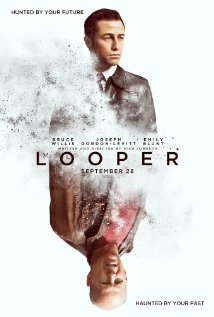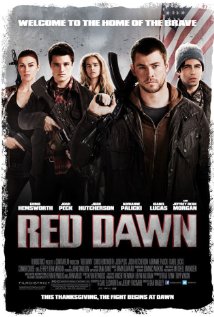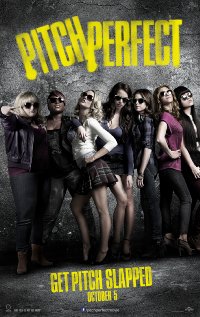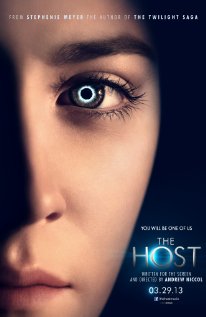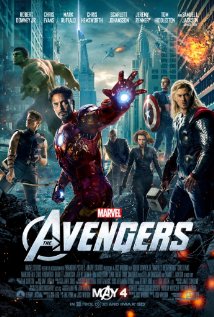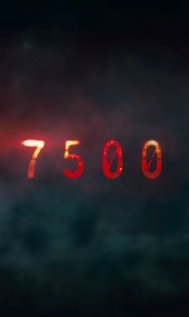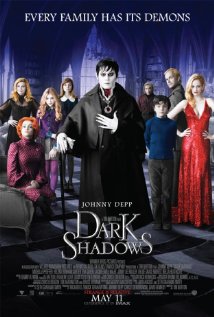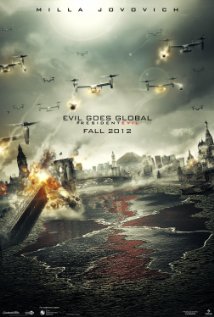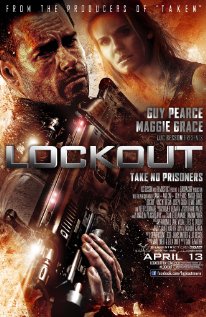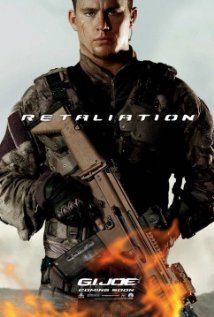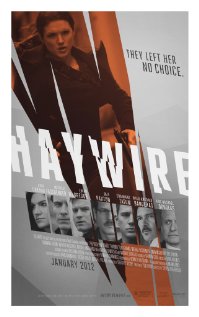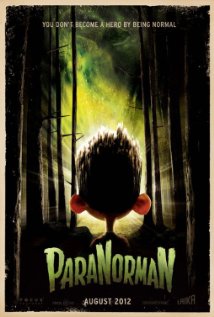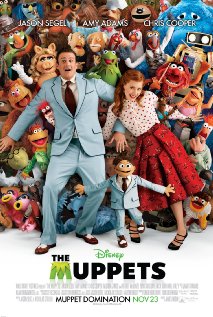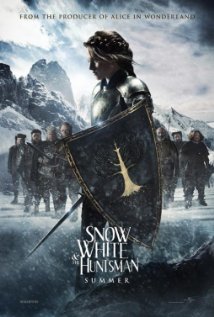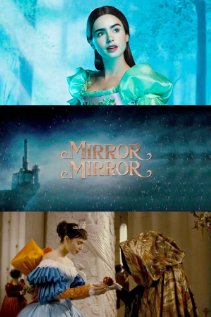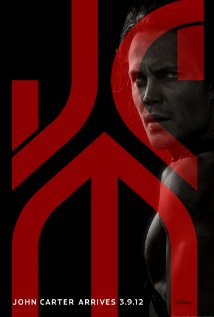The boys kick off their month of scary movies with the King and Kubrick classic “The Shining”. In theaters, they head out to see the time travel action thriller, “Looper”. From there, it’s off to the trailer park for the 2012 remake of “Red Dawn”. In movie news we ask if you’re ready for a “Hungry Hungry Hippos” movie, if you’d care if “The Wizard of Oz” was converted to 3D, and whether or not “Lincoln” has any influence over your Presidential vote. It’s the 125th reel of COL Movies: “Heeeeere’s Johnny!”
[display_podcast]
News:
- Monopoly, Action Man and Hungry Hungry Hippos Films Planned
- “The Wizard of Oz” being converted to 3D for 2013
- Lincoln joins in on the debate
The Past: The Shining (1980)
Rotten Tomatoes 88% Fresh; 91% Audience
[asa]B000UJ48WC[/asa]
Director: Stanley Kubrick
Starring: Jack Nicholson, Shelley Duvall, Danny Lloyd
Trivia:
- During the making of the movie, Stanley Kubrick would occasionally call Stephen King at 3:00 a.m. and ask him questions like “Do you believe in God?”
- Stephen King was first approached by Stanley Kubrick about making a film version of ‘The Shining’ via an early morning phone call (England is five hours ahead of Maine in time zones). King, suffering from a hangover, shaving and at first thinking one of his kids was injured, was shocked when his wife told him Kubrick was really on the phone. King recalled that the first thing Kubrick did was to immediately start talking about how optimistic ghost stories are, because they suggest that humans survive death. “What about hell?” King asked. Kubrick paused for several moments before finally replying, “I don’t believe in hell.”
- The Timberline Lodge on Mt. Hood in Oregon was used for the front exterior, but all the interiors as well as the back of the hotel were specially built at Elstree Studios in London, England. The management of the Timberline requested that Stanley Kubrick not use 217 for a room number (as specified in the book), fearing that nobody would want to stay in that room ever again. Kubrick changed the script to use the nonexistent room number 237.
- Stanley Kubrick decided that having the hedge animals come alive (as they do in the book) was unworkable due to restrictions in special effects, so he opted for a hedge maze instead.
- There is a great deal of confusion regarding this film and the number of retakes of certain scenes. According to the Guinness Book of Records, the scene where Wendy is backing up the stairs swinging the baseball bat was shot 127 times, which is a record for the most takes of a single scene. However, both Steadicam operator Garrett Brown and assistant editor Gordon Stainforth say this is inaccurate – the scene was shot about 35-45 times. Brown does say however that the scene where Hallorann explains to Danny what shining is was shot 148 times, which is a world record.
- Stanley Kubrick considered both Robert De Niro and Robin Williams for the role of Jack Torrance but decided against both of them. Kubrick didn’t think De Niro would suit the part after watching his performance in Taxi Driver, as he deemed De Niro not psychotic enough for the role. He didn’t think Williams would suit the part after watching his performance in Mork & Mindy, as he deemed him too psychotic for the role. According to Stephen King, Kubrick also briefly considered Harrison Ford.
- Stephen King tried to talk Stanley Kubrick out of casting Jack Nicholson in the lead suggesting, instead, either Michael Moriarty or Jon Voight. King had felt that watching either of these normal-looking men gradually descend into madness, would have immensely improved the dramatic thrust of the storyline.
- The scrapbook that Jack finds in the novel makes a brief appearance next to his typewriter in the scene when Jack tells Wendy never to bother him while he’s working.
- Jack Nicholson ad-libbed the “little pigs” dialog towards the end of the film.
- During the scene where Wendy brings Jack breakfast in bed, it can be seen in the reflection of the mirror that Jack’s T-shirt says “Stovington” on it. While not mentioned in the film, this is the name of the school that Jack used to teach at in the Stephen King novel.
- Stanley Kubrick, known for his compulsiveness and numerous retakes, got the difficult shot of blood pouring from the elevators in only three takes. This would be remarkable if it weren’t for the fact that the shot took nine days to set up; every time the doors opened and the blood poured out, Kubrick would say, “It doesn’t look like blood.” In the end, the shot took approximately a year to get right.
- During filming, Stanley Kubrick made the cast watch Eraserhead, Rosemary’s Baby and The Exorcist to put them in the right frame of mind.
- All of the interior rooms of The Overlook Hotel were filmed at Elstree Studios in England, including The Colorado Lounge, where Jack does his typing. Because of the intense heat generated from the lighting used to recreate window sunlight (the room took 700,000 watts of light per window to make it look like a snowy day outside), the lounge set caught fire. Fortunately all of the scenes had been completed there, so the set was rebuilt with a higher ceiling, and the same area was eventually used by Steven Spielberg as the snake-filled Well of the Souls tomb in Raiders of the Lost Ark.
- The Louisville Slugger baseball bat with which Wendy Torrance bludgeons Jack is signed by Carl Yastrzemski, Hall of Fame Red Sox player. Author Stephen King is a huge Red Sox fan.
- Every time Jack talks to a “ghost”, there’s a mirror in the scene, except in the food locker scene. This is because in the food locker scene he only talks to Grady through the door. We never see Grady in this scene.
- According to Stephen King, the title is inspired by the refrain in the Plastic Ono Band’s song, “Instant Karma” (by John Lennon), which features the chorus: “We all shine on.”
- At the time of release, it was the policy of the MPAA to not allow the portrayal of blood in trailers that would be approved for all audiences. Bizarrely, the trailer for The Shining consists entirely of the shot of blood pouring out of the elevator. Stanley Kubrick had convinced the board the blood flooding out of the elevator was actually rusty water.
- Because Danny Lloyd was so young and since it was his first acting job, Stanley Kubrick was highly protective of the child. During the shooting of the movie, Lloyd was under the impression that the film he was making was a drama, not a horror movie. He only realized the truth seven years later, when, aged 13, he was shown a heavily edited version of the film. He didn’t see the uncut version of the film until he was 17 – eleven years after he’d made it.
- The throwing around of the tennis ball inside the overlook hotel was Jack Nicholson’s idea. The script originally only specified that, “Jack is not working”.
- Outtakes of the shots of the Volkswagen traveling towards the Overlook at the start of the film were plundered by Ridley Scott (with Stanley Kubrick’s permission) when he was forced to add the ‘happy ending’ to the original release of Blade Runner.
- The “snowy” maze near the conclusion of the movie consisted of 900 tons of salt and crushed Styrofoam.
- Stanley Kubrick’s first choice to play Danny Torrance was Cary Guffey, the young boy from Close Encounters of the Third Kind. Guffey’s parents apparently turned down the offer due to the film’s subject matter.
- Billie Gibson, the old woman in the tub, has been falsely rumored to be Ann Gibson, Mel Gibson’s late mother.
- Neither Lia Beldam (young woman in bath) nor Billie Gibson (old woman in bath) appeared in another movie before or after this one.
- There were so many changes to the script during shooting that Jack Nicholson claimed he stopped reading it. He would read only the new pages that were given to him each day.
- Wendy Carlos and Rachel Elkind wrote and performed a full electronic score for the film, but Stanley Kubrick discarded most of it and used a soundtrack of mostly classical music. Only the adaptation of Hector Berlioz’s “Symphonie Fantastique” during the opening credits, the music during the family’s drive to the hotel, and a few other brief moments (such as Halloran’s plane trip) survive in the final version. Wendy Carlos once noted that she’d like to see the original score released on CD, but there were too many legal snags at the time. As of 2005, Carlos’ score for the film has been remastered, and is a part of “Rediscovering Lost Scores Volumes 1 and 2”.
- For the scene in which Jack breaks down the bathroom door, the props department built a door that could be easily broken. However, Jack Nicholson had worked as a volunteer fire marshal and tore it apart far too easily. The props department were then forced to build a stronger door.
- Anjelica Huston lived with Jack Nicholson during the time of the shooting. She recalled that, due to the long hours on the set and Stanley Kubrick’s trademark style of repetitive takes, Nicholson would often return from a day’s shooting, walk straight to the bed, collapse onto it and would immediately fall asleep.
- Prior to hiring Diane Johnson as his writing partner, director/producer Stanley Kubrick rejected a screenplay written by Stephen King himself. King’s script was a much more literal adaptation of the novel, a much more traditional horror film than the film Kubrick would ultimately make. He was considering hiring Johnson because he admired her novel “The Shadow Knows,” but when he found out she was a Doctor of Gothic Studies, he became convinced she was the person for the job.
- The making-of documentary shot by Vivian Kubrick shows that the hedge maze set, while nowhere near as large as the maze in the film (which was mostly a matte painting), was still large and complex enough to require a detailed map. In the commentary for her documentary, she notes that many crew members really got lost in the maze, dryly noting that it now reminds her of the lost-backstage scene in This Is Spinal Tap.
- There was no air conditioning on the sets, meaning it would often become very hot. The hedge maze set was stifling; actors and crew would often strip off as much of the heavy clothing they were wearing as quickly as they could once a shot was finished.
- Tony Burton, who had a brief role as Larry Durkin the garage owner, arrived on set one day carrying a chess set in hopes of getting in a game with someone during a break from filming. Stanley Kubrick, an avid chess player who had in his youth played for money, noticed the chess set. Despite production being behind schedule, Kubrick proceeded to call off filming for the day and engage in a set of games with Burton. Burton only managed to win one game, but nevertheless the director thanked him, since it had been some time that he’d played against a challenging opponent.
- Stanley Kubrick wanted to shoot the film in script order. This meant having all the relevant sets standing by at all times. In order to achieve this, every soundstage at Elstree was used, with all the sets built, pre-lit and ready to go during the entire shoot at the studios.
- To construct the interiors of the Overlook, Stanley Kubrick and his production designer, Roy Walker purposely set out to make it look like an amalgamation of bits and pieces of real hotels, rather than giving it one single design ethic. Kubrick had sent many photographers around the country photographing hotel rooms and picking his favorite. For example, the red men’s bathroom was modeled on a men’s room in the Biltmore Hotel in Arizona designed by Frank Lloyd Wright, and the Colorado lounge was modeled on the lounge of the Ahwanee Hotel in the Yosemite Valley. Indeed, the chandeliers, windows and fireplace are nearly identical, so much so that people entering the Ahwahnee often ask if it’s “the Shining hotel”.
- Steadicam operator Garrett Brown accomplished many of the ultra-low tracking corridor sequences from a wheelchair on which his invention was mounted. Grips would either pull backward or push forward the wheelchair, depending on the requirement of the shot
- In the party scene, Stanley Kubrick told the extras to mouth their words.
- One of the shots in the part where Jack is bouncing a ball against a wall took several days to film. This was because the shot entailed the ball bouncing from the wall onto the camera lens as it filmed. As Stanley Kubrick was so determined to get this precise shot, the camera kept rolling while the ball was continually hit against the wall in the hope of it bouncing back and hitting the lens. It took everyone on the entire unit having a go at it in between other shots before the shot was finally achieved after several days.
- The famous opening scene was shot in Glacier National Park in Montana just north of St. Mary’s Lake. The road seen in the scene, Going-to-the-Sun Road, does actually close down during winter and is only negotiable by snowcat. Kubrick initially sent a second unit to the Rockies in Colorado, but they reported back that the area wasn’t very interesting. When Stanley Kubrick saw the footage they had shot, he was furious, and fired the entire unit. He then sent Greg MacGillivray, a noted helicopter cameraman, to Montana and it was McGillivray who shot the scene.
- This was voted the ninth scariest film of all time by Entertainment Weekly.
- The movie’s line “Here’s Johnny!” was voted as the #68 movie quote by the American Film Institute (out of 100), and as the #36 of “The 100 Greatest Movie Lines” by Premiere in 2007.
- Much like the casting of the “Jack” character, Stephen King also disliked the casting of Shelley Duvall as “Wendy.” King said that he envisioned Wendy as being a blond former cheerleader type who never had to deal with any true problems in her life making her experience in the Overlook all the more terrifying. He felt that Duvall was too emotionally vulnerable and appeared to have gone through a lot in her life, basically the exact opposite of how he pictured the character.
- The film was released in the United States on star Scatman Crothers’ 70th birthday.
- The role of Lloyd the Bartender was originally to have been played by Harry Dean Stanton, who was unable to take the part due to his commitment to Alien.
- Scatman Crothers was a friend of Jack Nicholson’s, and when he heard about the Halloran role, he asked Nicholson to talk to Kubrick about casting him.
- The two tracked vehicles in the movie are the Activ Fischer VW Powered 4 Speed Snow-Trak (referred to and labeled on the vehicle as a “SnowCat”) and a Thiokol Imp Snow-Cat (this is the vehicle Wendy and Danny escape in).
- During an interview for the UK’S The 100 Greatest Scary Moments, Shelley Duvall revealed that due to her role requiring her to be in an almost constant state of hysteria, she eventually ran out of tears from crying so hard. To overcome this she kept bottles of water with her at all times on set to remain hydrated.
- The image of the two girls in the hotel corridor was inspired by the photograph “Identical Twins, Roselle, New Jersey, 1967” by Diane Arbus.
- First film of Manning Redwood.
- Approximately 5000 people auditioned for the role of Danny over a six-month period. The interviews were carried out in Chicago, Denver and Cincinnati by Stanley Kubrick’s assistant Leon Vitali and his wife, Kersti. Aspiring actors were asked to send in photographs of themselves, and from the photographs, a list was made of the boys who looked right, who were then called in to interview. Vitali would then have the boys do some minor improvisation on camera, and Kubrick would review the footage, gradually narrowing the list down.
- According to Variety magazine, the film took almost 200 days to shoot. However, according to assistant editor Gordon Stainforth, it took much more, nearly a year. The film was originally supposed to take 17 weeks, but it ultimately took 51. Because the film ran so long, Warren Beatty’s Reds and Steven Spielberg’s Raiders of the Lost Ark were both delayed as they were both waiting to shoot in Elstree Studios.
- When Steadicam inventor/operator Garrett Brown was hired to work on the picture, he was assured that there was no way the shoot would run over six months, as he had to be back in the US in six months time to shoot Rocky II. Six months into the shoot, less than half the film had been shot, and for several months, Brown worked one week in London on “The Shining,” one week in Philadelphia on “Rocky,” commuting by Concorde every Sunday.
- To achieve the smoothness of the opening shots, cameraman Greg MacGillivray secured a wide angle Arriflex camera to the front of a helicopter, then balanced the blades to remove any vibrations. Even the shot where the camera comes down behind the car, passes it out, and goes over the edge is done via the helicopter.
- The idea for Danny Lloyd to move his finger when he was talking as Tony was his own; he did it spontaneously during his very first audition.
- For the scenes when we can hear Jack typing but we cannot see what he is typing, Kubrick recorded the sound of a typist actually typing the words “All work and no play makes Jack a dull boy”. Some people argue that each key on a typewriter sounds slightly different, and Kubrick wanted to ensure authenticity, so he insisted that the actual words be typed.
- The maze was constructed on an airfield near Elstree studios, by weaving branches to chicken wire mounted on empty plywood boxes. The maze was shot using an extremely short lens (a 9.8mm, which gives a horizontal viewing angle of 90 degrees) which was kept dead level at all times, to make the hedges seem much bigger and more imposing than they were in reality.
- The only shot in the film not achieved in-camera was the slow zoom in on the model of the maze, with the tiny figures of Danny and Wendy walking around at the center. To achieve this shot, a model of the maze was shot from six feet above. Then the small central section of the maze was built to scale next to an apartment complex. Actors Shelley Duvall and Danny Lloyd then walked about in the central section whilst the camera crew filmed it from the roof of the apartment building. The two shots were then simply composited together.
- The shot of the tennis ball rolling into Danny’s toys took 50 takes to get right.
- The scene of Hallorann approaching the hotel in the snow-cat was shot in real snow approaching the real Timberline hotel in Oregon.
- The scene towards the end of the film, where Wendy is running up the stairway carrying a knife, was shot 35 times; the equivalent of running up the Empire State Building.
- The 1921 photograph at the end of the film was a genuine 1920s photo, with Jack Nicholson’s head airbrushed onto the body of another man. Stanley Kubrick originally planned to use extras and shoot the photo himself, but he realized he couldn’t make it look any better than the real thing.
- Despite receiving generally unfavorable reviews upon its initial release, the film is today regarded as one of the best horror movies ever made. In 2001, it was ranked 29th on AFI’s ‘100 Years…100 Thrills’ list. In 2003, Jack Torrance was named the 25th greatest villain on the AFI’s ‘100 Years…100 Heroes and Villains’ list. The film was named the scariest film of all time by Channel 4 in 2003, and Total Film had it as the 5th greatest horror film in 2004. Bravo TV placed it 6th on their list of the 100 Scariest Movie Moments in 2005. In addition, film critics Kim Newman and Jonathan Romney both placed it in their all-time top ten lists for the 2002 Sight and Sound poll.
- Jack mentions Portland, Maine to Lloyd in the bar. Portland, Maine is where Stephen King grew up.
- Despite Stanley Kubrick’s fierce demands on everyone, Jack Nicholson admitted to having a good working relationship with him. It was with Shelley Duvall that he was a completely different director. He allegedly picked on her more than anyone else, as seen in the documentaries Making ‘The Shining’ and Stanley Kubrick: A Life in Pictures. He would really lose his temper with her, even going so far as to say that she was wasting the time of everyone on the set. She later reflected that he was probably pushing her to her limits to get the best out of her, and that she wouldn’t trade the experience for anything – but it was not something she ever wished to repeat.
- James Mason can be seen visiting the set of Stanley Kubrick’s The Shining in Vivian Kubrick’s TV documentary Making ‘The Shining’. Stanley Kubrick did not usually allow visitors to his set, but made an exception for Mason, who had memorably played Humbert Humbert for him in Lolita.
- Stephen King didn’t know that ‘redrum’ spelled murder backwards until he actually typed it. He loved the various connotations of the word.
- Wendy swings the baseball bat 41 times.
- According to Shelley Duvall the infamous ‘Heere’s Johnny!’ scene took 3 days to film and the use of 60 doors.
- On the DVD commentary track for Making ‘The Shining’, Vivian Kubrick reveals that Shelley Duvall received “no sympathy at all” from anyone on the set. This was apparently Stanley Kubrick’s tactic in making her feel utterly hopeless. This is most evident in the documentary when he tells Vivian, “Don’t sympathize with Shelley.” Kubrick then goes on to tell Duvall, “It doesn’t help you.”
- Stanley Kubrick had envisioned Shelley Duvall as his more timid, dependent version of Wendy Torrance from the very beginning. However Jack Nicholson after reading the novel, wanted Jessica Lange for the part of Wendy, and even recommended her to Kubrick, as he felt she fit Stephen King’s version of the character. After explaining the changes he had made, Kubrick convinced him that Duvall was the correct choice, as she best suited the emotionally fragile Wendy he had in mind. Many years later, Nicholson told EMPIRE magazine he thought Duvall was fantastic and called her work in the film, “the toughest job that any actor that I’ve seen had.”
- This film was shot in the same film studio that was used for Star Wars: Episode V – The Empire Strikes Back. In fact, much of the same fake snow used for this film was used for the Hoth scenes. Stephen King visited the set of both films, and met director Irvin Kershner. This later became the basis for part of his book “It.” Kirshner had been nicknamed “Kersh,” and was directing the first Star Wars film to feature Yoda. In the book, It, there is a character named Mrs. Kersh, who we are told sounds like Yoda when she talks.
- The outtakes link between this movie and Blade Runner was not the only element that connected the two. Actor Joe Turkel who plays Lloyd (the bartender who serves Jack), also played Dr. Eldon Tyrell in Blade Runner. Outtakes aside, Turkel is the only other common cast/crew link between both films.
- The two Ray Noble and His Orchestra songs used were not actually from the 1920s: “Midnight, the Stars and You” (played in the ballroom) was recorded Feb 16, 1934, and “It’s All Forgotten Now” (heard faintly when Grady is talking to Jack in the bathroom) was recorded July 11, 1934.
- Shelley Duvall is the only actor/actress playing a member of the Torrance family whose character name is not the same as his/her real life name – Jack Nicholson plays a character named Jack and Danny Lloyd plays a character named Danny.
- For a TV commercial in 2010 for “Premier Inn” hotels (UK), British comedian Lenny Henry re-enacted Jack Nicholson’s “Heeere’s Johnny” scene (“Heeere’s Lenny”) in which he demolished a hotel bathroom door with an ax.
- Despite the critical success of the film, it was nominated for two Golden Raspberry awards: Worst Actress for Shelley Duvall and Worst Director for ‘Stanley Kubrick’. It “lost” both awards.
- There is a character named Richard Haloran in the film Dementia 13, about an axe murderer. It was produced by Roger Corman, who directed several of Jack Nicholson’s early films.
- One of ‘Stanley Kubrick”s favorite films was Eraserhead, directed by David Lynch. Kubrick cited the film as a creative influence during the making of The Shining and screened Eraserhead to put the cast and crew in the mood he wanted to achieve for the film.
- When Jack uses an axe to break through the bathroom door, he shouts “Here’s Johnny”. This is probably a reference to the catchphrase of chat-show host Johnny Carson. However an alternative explanation is that it is a reference to an incident that occurred in the 1960s when Johnny Cash used a fire axe to break a connecting “doorway” between two motel rooms that he and his band members were using while on tour, and then broke through one of the doors from the corridor to make it look as if a thief had broken in and trashed the rooms.
- Stephen King got the idea for The Shining while his family were staying at the Stanley Hotel. They were the last guests before it shut down for the Winter. He saw a group of nuns leaving the hotel, and it got him thinking that the place had suddenly become godless. The King family stayed in Room 217, the haunted room in the novel but Room 237 in the film; a fire hose also resembled a snake (which doesn’t appear in the film but does in the TV mini-series), and King had already been playing around with a story idea about a boy with ESP, so he combined the two plotlines.
- Jack tells Lloyd in the bar that Danny once messed around with his work papers. This mirrors an event in Stephen King’s life, when his son once started playing around with his writing notes. He felt like killing him.
- The first of Stephen King’s books to be banned from school libraries because of the theme of wicked parents.
- The script was constantly changing on set, sometimes several times a day. The cast got very irritated by this, especially Jack Nicholson. Whenever the production team would give the cast copies of the script to memorize, Jack Nicholson would throw his away without even looking at it, as he knew that it was only going to change again.
- The book that Jack was writing contained the one sentence (“All work and no play makes Jack a dull boy”) repeated over and over. Stanley Kubrick had each page individually typed. For the Italian version of the film, Kubrick used the phrase “Il mattino ha l’ oro in bocca” (“He who wakes up early meets a golden day”). For the German version, it was “Was Du heute kannst besorgen, das verschiebe nicht auf Morgen” (“Never put off till tomorrow what you can do today”). For the Spanish version, it was “No por mucho madrugar amanece más temprano” (“Rising early will not make dawn sooner.”). For the French version, it was “Un ‘Tiens’ vaut mieux que deux ‘Tu l’auras'” (“A bird in the hand is worth two in the bush”).
- Kubrick originally wanted approximately 70 takes of the scene where Halloran (Scatman Crothers) gets killed by Jack Torrance, but Jack Nicholson talked Kubrick into going easy on the 69-year-old Crothers and stopping after 40. At one point during the filming, Crothers became so exasperated with Kubrick’s notorious, compulsive style of excessive retakes that he broke down and cried, asking “What do you want, Mr. Kubrick?”
- Director Trademark: (Stanley Kubrick):[Bathroom] Wendy hides from Jack in a bathroom during Jack’s ax attack.
- When first released, the film had an alternate ending: after the shot of Jack’s body, the film dissolves to a scene of policemen outside the hotel. It then cuts to a scene in a hospital, where Wendy is resting in a bed and Danny is playing in a waiting room. Ullman arrives and tells her that they have been unable to locate her husband’s body anywhere on the property. On his way out, Ullman gives Danny a ball – the same one that mysteriously rolled into a hallway earlier in the film, before Danny was attacked in room 237. Ullman laughs and walks away and the film dissolves to the move through the corridors towards the photo. Stanley Kubrick had the scene removed a week after the film was released.
- Danny croaks “Redrum” 43 times before his mother wakes up and Jack starts to break into the apartment.
- There is only one on-screen murder in the film.
- The scene where Jack is chasing Danny through the maze took over a month to shoot. During the shoot, crew-members often found themselves lost and had to walkie-talkie for assistance.
- Alcohol consumption was a federal crime between 1919 and 1933. The year Jack appears to have photographed for the last scene (1921), and the year President Warren G. Harding (in the book) ordered a case of Coors Beer from the bar (1922) would have occurred during Prohibition.
- Stephen King was reportedly disappointed in this film. In an interview in the June 1986 issue of American Film he said “It’s like a great big beautiful Cadillac with no motor inside, you can sit in it and you can enjoy the smell of the leather upholstery – the only thing you can’t do is drive it anywhere. So I would do everything different. The real problem is that Kubrick set out to make a horror picture with no apparent understanding of the genre. Everything about it screams that from beginning to end, from plot decisions to the final scene”. In particular, King disliked the casting of Jack Nicholson as Jack Torrance. This was because he felt that in the novel, it was pivotal that Jack is initially a good man who is slowly overcome by the forces of evil and who is fighting a losing battle against alcoholism. King was of the opinion that due to the casting of Nicholson, who was well known for playing unstable characters, Jack in the film is very much on the edge when the story begins, and the character does not possess the inner goodness so vital to Jack of the novel. King wanted to cast someone who could play the character as more genial in the early stages; apparently he was very keen on Jon Voight. He was also hugely disappointed that the themes of the evils of alcoholism and the disintegration of the family unit were relatively unimportant in the film due to his own battle with alcoholism and because of this personal investment in that aspect of the novel he was largely disheartened by the film.
- In the novel, The Shining, Dick Hallorann survives (though Jack attacks him with a croquet mallet, not an axe), and he, Wendy, and Danny escape together.
- In the novel, Wendy is first attacked by Jack with a croquet mallet; in the movie, she serves the first blow to Jack with a baseball bat. Even more ironically, he never strikes her at all throughout the entire film; he becomes violent and homicidal with only one other character.
Talking Points:
- Still Scary?
- The Soundtrack (Done by Wendy Carlos of Tron fame)
- The horror of it being all in the mind and not a “typical” horror film – more scary?
What We Learned:
- Some places are like people, some shine and some don’t.
- All work and no play makes Jack a dull boy.
Trailer:
Recommendations:
Jeff: I’ve always appreciated this movie, and other Stanley Kubrick movies for it’s technical value. The acting was great, the cinematography was great but the problem I have with it is its pacing. I always feel a little bored when watching this movie. It’s a movie for your what you haven’t watched and should see list, but it’s not on my rewatch list.
Carlos: My siblings and I would watch this film every time it was on, which happened always to be on Saturdays right before midnight. It succeeds because it is a slow paced horror film – it is one about atmosphere and tension. The entire film builds to the end when the craziness happens. It is also a masterwork of imagery, not fancy complicated, but powerful images that stop you dead and work into you. Everyone who has ever seen The Shining is affected by it, and that’s impressive even 30+ years later.
Steve: I’ve always liked this movie, but not loved it. It’s probably just that I was waaay to young to understand it as a kid and today it just seems to drag along. However, I love just about anything Stephen King puts out there and when put together with an epic director like Stanley Kubrick I would expect nothing less than a classic. Innovative and truly scary because it’s “all in your mind”.
The Present: Looper
Rotten Tomatoes 94% Fresh; 90% Audience
Director: Rian Johnson
Starring: Joseph Gordon-Levitt, Bruce Willis, Emily Blunt
Trivia:
- This movie marks the third collaboration between director Rian Johnson and lead actor Joseph Gordon-Levitt, the first being Brick, and the second being a quick cameo in The Brothers Bloom as a bar patron with guitar
- Emily Blunt revealed that she agreed to star in the movie after reading half of the script. She didn’t even know what her character was.
- The incredibly large “Gat” pistols are actual production firearms, and not just a prop created for the film. It is a Magnum Research BFR (Big Frame Revolver) chambered in .45-70 Government, a rifle round originally adopted by the U.S. military in 1873. The BFR weighs roughly 4.5 pounds.
- Bruce Willis fires two modern-looking submachine guns in one scene. These are examples of the FN P90, designed and manufactured by FN Herstal in Belgium.
- Joseph Gordon-Levitt had prosthetics to make him look more like Bruce Willis in order to play his younger self. He also watched a lot of Bruce Willis films in preparation for the role so that he could impersonate some of his mannerisms.
- Numbers are never shown on clocks/watches throughout the movie. Either symbols or no numbers are used on the clock-faces.
- According to director Rian Johnson, Noah Segan (Kid Blue) took a number of classes to learn how to spin his GAT gun around his finger. Johnson told Entertainment Weekly that he filmed numerous takes of Segan spinning the 8-lb gun, but ended up using the one take where he accidentally flubbed and nearly dropped it, because Johnson thought it was funny.
- A diner was built in the small town of Thibodaux, LA (about an hour north of New Orleans) where all of the diner interior/exterior scenes were shot. Locals saw the diner set and kept asking the film crew on when the new diner was going to open. Director Rian Johnson was later told that the diner set was still standing after Hurricane Isaac moved through in September 2012.
- The scene where Young Joe (Joseph Gordon-Levitt) falls off the fire escape was filmed on the actor’s 30th birthday. Gordon-Levitt was left hanging on the stunt wires while the crew sang “Happy Birthday” and wheeled out birthday cake.
Talking Points:
- Was it what you thought it would be?
- There is always something scary about children with powers
Critic Notes:
- Positives: Original and fresh; Clever dialogue; There is enough left unexplained that the viewer has to contribute his or her own interpretation; Interesting characters
- Negatives: The time travel aspects were not well defined and just seemed to be affectations; Too many things going on just made it mind-numbing
What We Learned:
- Time travel will be invented 30 years from now.
- Time travel fries your brain like an egg.
- In the future, don’t go to Paris – go to China.
- Never let your target escape, even if it’s you.
Trailer:
Recommendations :
Jeff: I’m assuming this was awesome and when I do see it, I expect to love it.
Carlos: I was amazed. Having the time travel movie be a shell for an entirely different story was mind-bendingly brave. There were a few images/moments in this movie that made me squeal. The time travel isn’t deeply thought through because 1. it just makes your brain hurt and 2. it’s a way of telling this particular story. Rian Johnson is one of my favorite films, as Brick is like nothing you’ll ever see, but this movie really blew me away in how ballsy and interesting it becomes from about halfway in.
Steve: I didn’t really know what to expect going in, so I found the story and plot twists very interesting and different. Definitely an action and cerebral thriller in one, so it sucked me in. All in all, kudos for an original concept!
The Future: Red Dawn
Release: November 21, 2012
Director: Dan Bradley
Starring: Chris Hemsworth, Isabel Lucas, Josh Hutcherson
Summary:
A town in Washington becomes the initial target of a foreign invasion. Under enemy occupation, the town’s citizens are taken prisoners. A group of young people, calling themselves ‘The Wolverines’ (after their high school mascot), band together in the surrounding woods. There, they train and organize themselves into a group of guerrilla fighters in order to liberate their town
Talking Points:
- Necessary?
- Significance of changing to North Koreans? (1984 was Russia, Cuba & Nicaragua)
- Timing – we were not “at war” when the first came out so it was a gut check
Trailer:
Excitement:
Jeff: Good little modern take on a classic movie. In some sense I wish they would have called it something different or not make it a “remake”. Maybe mentioned the inspiration for it, but not really being a remake. Does that make any sense?
Carlos: Lost him!! 🙁
Steve: I always loved the original, so again this will be something from my childhood that’s being redone with a new spin. I’m going to give it the opportunity to be good, but I don’t think I’ll have the same visceral reaction I did when I was younger.
The Past: The Exorcist
[asa]B003UGLCIA[/asa]
The Present: Pitch Perfect
The Future: The Host (2013 – Saoirse Ronan)
Download Podcast
Alternate Download
Podcast: Play in new window | Download
